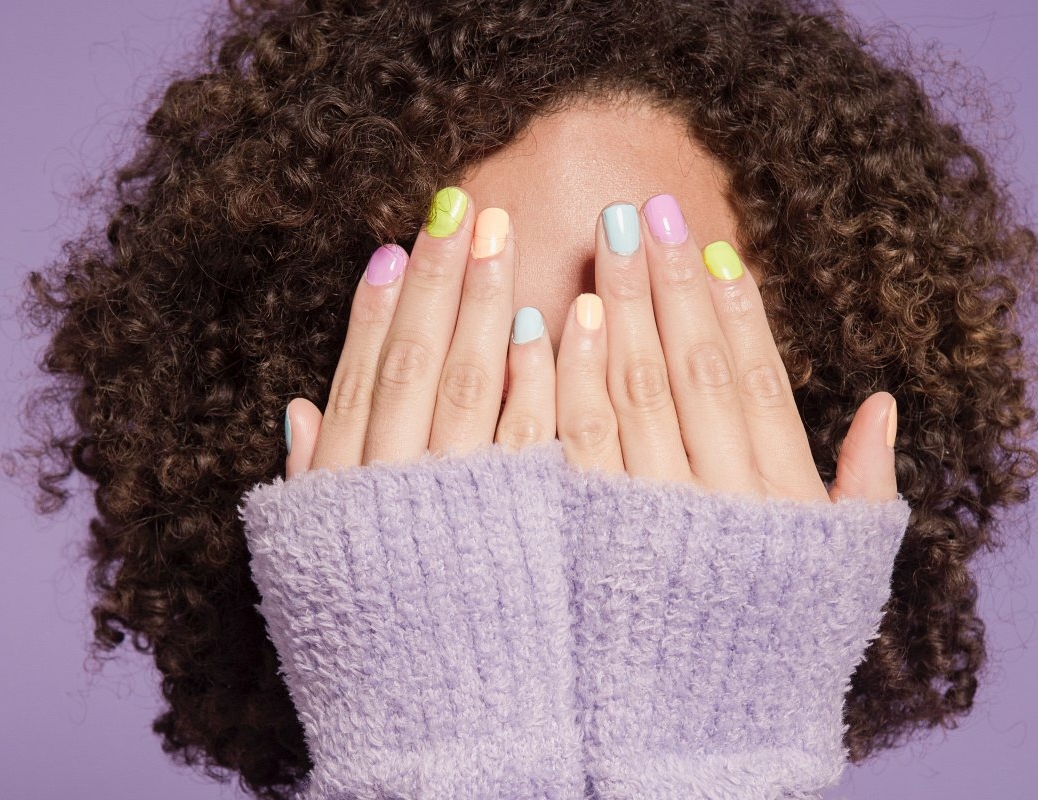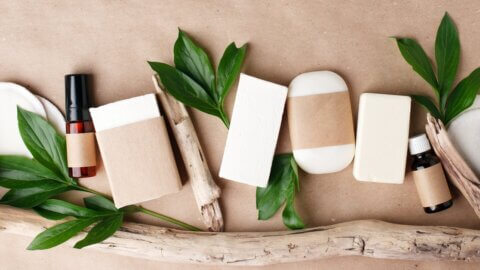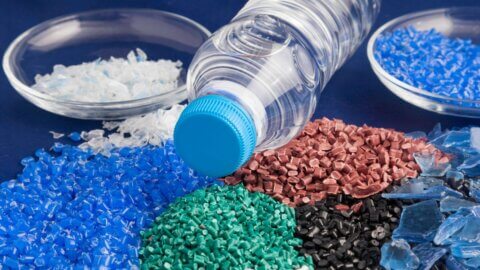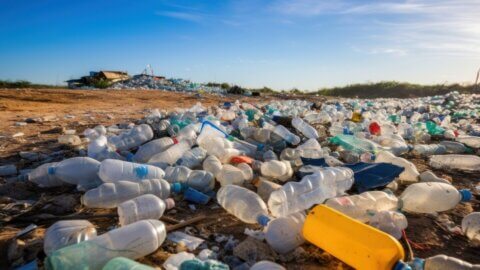You have doubtless seen or even tried some of the new nail polishes touting their formulas as 7-free, 10-free, or even 21-free, with #-free referring to the number of toxic chemicals that are excluded from the nail polish. The recent clean beauty trend has shone a light on the harmful chemicals found in nail polishes, which has resulted in consumers demanding cleaner, non-toxic nail polishes. After all, we want our nails to look good, but it’s not worth getting slowly poisoned over, right? At least, not if there better options to choose from…
With over 100 million active nail polish users in the U.S., nail polish companies are responding to this consumer demand. More and more companies – major brands as well as niche clean beauty brands – are coming out with less toxic “#-free” formulations. However, these labels have left the average consumer somewhat confused. What do all of the “free” numbers on the product labels actually refer to? If 10 chemicals are excluded, how many still remain? What are the health risks of regularly using nail polish? Are there any truly non-toxic nail polishes that exist?
In this article, we will do a deep dive into this subject to answer some of these questions. To better understand the lacquerous phenomena of nail polish, and to explore possible paths to nail beauty health and environmental sustainability, let’s start from the beginning.
Note: Republic of Green researches and reviews green products that we hope you will love! As an Amazon Associate, Republic of Green may earn a small commission on qualifying purchases if you click through to purchase something on Amazon. There is no additional cost to you and it helps us to keep bringing you good content. Thank you for supporting Republic of Green!
Who Invented Nail Polish?
Short answer: The ancient Chinese probably invented nail polish.
Long answer: The history of nail polish dates back to the ancient civilizations of Asia and Africa, living more than 5,000 years before us. Evidence suggests that Chinese and Egyptian women used a mixture of egg whites, gelatin, beeswax, Arabic gum, and plant dyes, like henna or mashed flowers, to embellish their nails. In those communities, bright colors such as red, black, and gold were symbolic of power and superiority and were therefore reserved for the elites. The commoners were allowed only nude and pale shades. Other historical reports include Romans painting their nails with a mixture of sheep fat and blood, and Turkish women creating a natural nail polish from boiled rose petals to tint their nails pink.
In the Western Hemisphere, where for a time bleached nails were a sign of high social status, colored nail polish was uncommon until the 20th century. Michelle Menard is credited as the first person to conceptualize nail polish based on automobile paint, and she later founded the cosmetic company Revlon, Inc. in 1932. Since then, nail polish formulations have evolved to provide a platform for the variety of nail colors and effects desired by consumers (Sherrow, 2001; Chandra & Das, 2019; Forde, 2018).
The car-paint origins of nail polish raise a highly relatable question of “What exactly can be found in a modern nail polish ingredient list…?”
What Is Nail Polish?
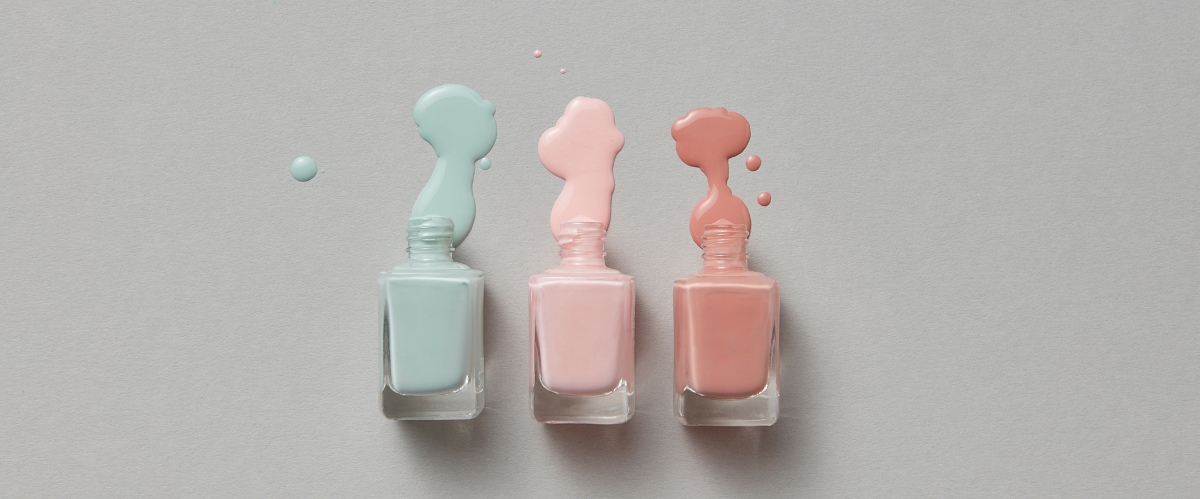
Short answer: Nail polish is a liquid mixture of synthetic, organic compounds forming an impermeable nail coat upon contact with the environment.
Long answer: According to the Cambridge Dictionary, nail polish is a colored liquid that is painted on fingernails or toenails. From both practical and scientific perspectives, fingernail coatings form two separate groups: ones hardening upon solvent evaporation (nail enamel, base/top coats) and ones hardening upon specific chemical reaction, called polymerization (light-curing gels, preformed artificial nails).
Conventional nail polish contains already assembled polymers, meaning long chains of repeated molecules, which are suspended in an acetate-based solvent. Mixed together with crack-preventing plasticizers and artificial pigments, the nail polish liquid dries up to form a firm coating upon contact with air. Gel nail polish on the other hand is made up of disassembled polymers, called monomers. These light-sensitive organic compounds are reactive to the UV light used in cosmetic lamps, triggering their polymerization and leading to gel hardening (Baran, 2002; Brunning, 2017).
Taking a closer look at the composition of nail polishes, one might get the impression that it comes straight from the reagent cabinet of a chemistry laboratory. Is it worth leaning into the aspect of nail polish’s potential impacts on its users’ health?
Is Nail Polish Toxic?
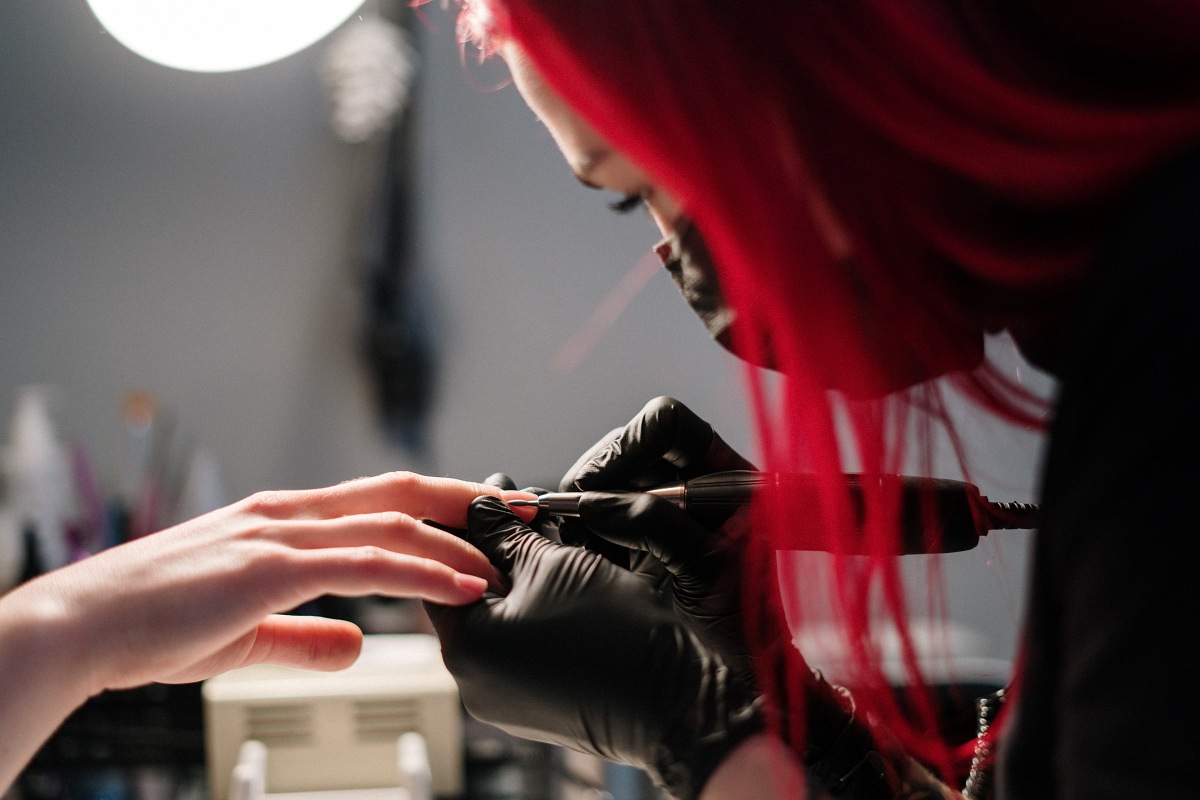
Short answer: Yes. Nail polish is mostly toxic.
Long answer: According to the FDA, nail products sold in the United States must be safe for consumers by law, when used following directions. Many nail products contain potentially harmful ingredients but are allowed on the market because they are supposedly safe when used as directed. For example, toluene, dibutyl phthalate (DBP), formaldehyde, and triphenyl phosphate (TPhP) are all common ingredients of nail enamel formulations, increasing both coloring and coat durability. Despite their great cosmetic performance, exposures to toluene, DBP, and formaldehyde are reported to cause central nervous system dysfunctions, respiratory irritation, reproductive complications as well as cancer development. Thus, these chemicals were nicknamed the toxic trio in the industry (Kwon, 2022). Instead of the plasticizer DBP, many nail polishes now contain an alternative plasticizer, triphenyl phosphate, which also has reproductive toxicity concerns. Moreover, TPhP is very toxic to aquatic organisms and was shown to cause dermal problems and allergies (Young, 2017; Kim et al., 2019).
The FDA argues that even though some nail polish ingredients are harmful when swallowed, they are not harmful when used on the nails, because the nail is a barrier, which prevents absorption. However, this statement was debunked by scientists at least as early as the 1980s, with evidence of direct nail permeability for water (Walters & Flynn, 1983) and alcohol (Walters et al., 1981). Recent studies further confirmed the dermal absorption of dangerous phthalates from nail polish coatings. TPhP metabolites found in the urine of nail polish users led scientists to suggest that this cosmetic may be a significant source of both short-term and chronic plasticizer exposures (Mendelsohn et al., 2016). Today we know for sure that human nails can be much more permeable than the skin. As a result, they can soak up harmful substances such as nail polish ingredients, that are applied to their surface, and cause health problems, according to i.a. Joy Rowland, DPM — Ohio’s orthopedic surgeon (Cleveland Clinic, 2020; Miller, 2020).
With a large and growing consumer base (including openings for new niches such as cis-male and drag beauty), one would think the multi-billion-dollar nail polish industry would have been strictly regulated by now. However, apart from individual examples such as bans on DBP (in conventional nail polish) or glycol methyacrylate (in gels) in the EU (Commission Regulation 2020/1682; Entry 51 to Annex XVII of REACH), there are essentially no comprehensive standards on the safety of ingredients used in nail enamel products. Therefore, toxic substances may leak into our bloodstream through nail plates without any control.
Based on growing consumer education regarding the toxins found in nail polish and the consequent demand for cleaner, safer products, the beauty industry has begun to manufacture and market nail polishes that are “free” of some number of toxic chemicals. These may be labeled as 7-free, 14-free, etc. all the way up to 21-free.
What Are #-Free Nail Polishes?
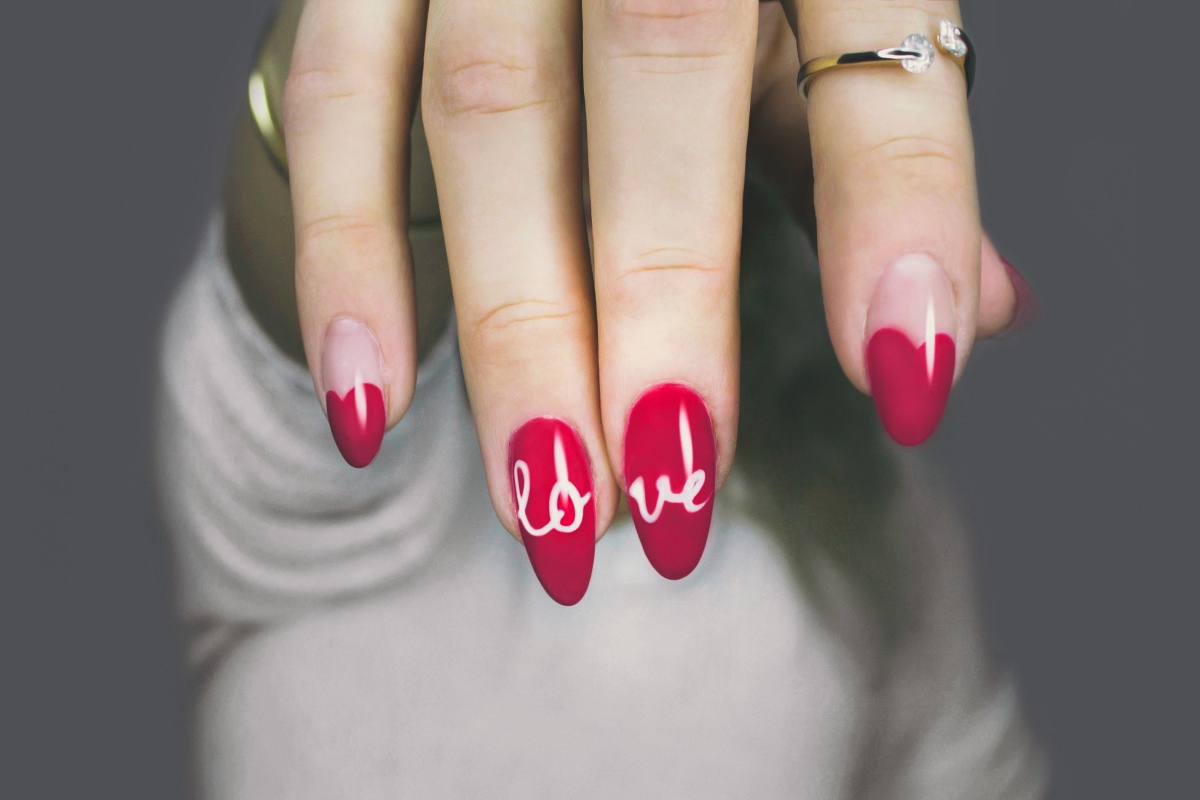
Short answer: #-Free refers to nail polishes that have #-number of common toxic ingredients excluded from their composition. So 7-free polishes exclude seven toxic ingredients. However, these #-free nail polishes may still contain other dangerous chemicals, and generally, they do.
Long answer: During the 2000s, nail polish manufacturers began advancing “3-Free” items, eliminating three broadly announced lethal synthetic products: toluene, formaldehyde, and DBP. With the breaking research news about the presence of endocrine-disrupting phthalates in the bodies of nail polish users (Mendelsohn et al., 2016) a few years ago, the campaign for introducing less toxic nail enamel substitutes has only sped up. The new marketing strategy was to increase the number of dangerous chemicals from 3, lately coming up to 21. However, with DBP supplanted by another endocrine-upsetting plasticizer TPhP, most of the new #-Free formulations have appeared with no standardization as to which synthetics are prohibited (Mohiuddin, 2019) in the “non-toxic” nail polishes.
And “non-toxic” is a key phrase, on which the supposed eco-friendliness and health-cautiousness were built, leaving other suspicious ingredients out of the conversation.
What are the Ingredients in Nail Polish and Related Health Impacts?
Short answer: As there is no short answer to this question, the best advice for health-minded nail polish users is to look not only at the “free” number but also at which toxins still remain in the formula. EWG’s Skin Deep® database allows one to look up both individual ingredients and cosmetic products. Ranking them on a 10-point scale of safety for human health, the website is based on available results of toxicological studies.
Long answer: Although nail polish can be made with only a few ingredients, the composition of individual nail products can vary considerably due to the wide range of alternative chemical compounds that can be used for solvents, resins, or plasticizers. The following are toxic chemicals commonly used as nail polish ingredients and their associated health risks:
The TOXIC TRIO (3-free):
- toluene causes skin irritation, drowsiness, and dizziness, is suspected of damaging the unborn, and leads to organ damage through prolonged or repeated exposure;
- dibutyl phthalate is suspected of damaging both fertility and pregnancy, prolongated contact may cause burns to skin and eyes, and poses a huge threat to aquatic life;
- formaldehyde (aka formalin) is toxic to the skin and lungs and may cause allergies, irritation, and burns, also suspected of causing genetic defects and cancer development.
Chemicals that may be EXCLUDED in various #-free formulations:
- camphor (from 5-free up) leads to eye, skin, and lung irritation, and is suspected of causing genetic defects during pregnancies, when heated to decomposition it emits toxic fumes;
- parabens (from 6-free up), where the toxicity is reported in individual cell and animal laboratory studies, also reported to pose a threat to the natural environment;
- xylene (from 7-free up), which is harmful in contact with skin or if inhaled, may have adverse effects on human reproduction or development, and interacts with the central nervous system;
- ethyl tosylamide (from 7-free up) can lead to skin, eye, and respiratory irritation, considered a possible allergen and carcinogen;
- phthalates (from 10-free up), where chronic exposure negatively impacts the endocrine system and functioning of multiple organs, with adverse consequences on the success of pregnancy, child growth and development, and reproductive systems in both young children and adolescents;
- synthetic fragrances (from 10-free up) are petroleum-based and can lead to endocrine disruptors and cancer development.
Chemicals that may be INCLUDED in various #-free formulations:
- butyl- and ethyl-acetates, which are industrial solvents where prolonged exposures are linked with skin and respiratory irritation;
- nitrocellulose, which is classified as a neurotoxin;
- acetyl tributyl citrate reported to change key enzyme activity in the intestine cells;
- isopropyl alcohol, a potent eye irritant, and central nervous system depressant;
- acrylates/styrene copolymer, the main ingredients of the environmental microplastic pollution and possible carcinogens according to EPA;
- n-butyl alcohol, which is classified as a neurotoxin and poses threat to the environment;
- benzophenone-1, which was shown to help in the proliferation of cancer cells and express endocrine-disrupting activity, and is linked to neuronal delay, congenital malformations, male infertility, and problems with behavioral development;
- alumina, an aluminum oxide causing eye and skin irritation;
- glitters, which are also a major component of microplastic pollution, leading up to its gradual build-up in the environment and human bodies (Kim et al., 2019; Wang & Qian, 2021).
In sum, in reality, most of the “less-toxic” nail polish alternatives are just that – a less potent mix of different, mostly synthetic chemicals. So, calling these products “non-toxic” is unfortunately an overstatement both in relation to human and environmental health.
Is 3-, 5-, 10-, 13-Free Just a Greenwashing Marketing Ploy?
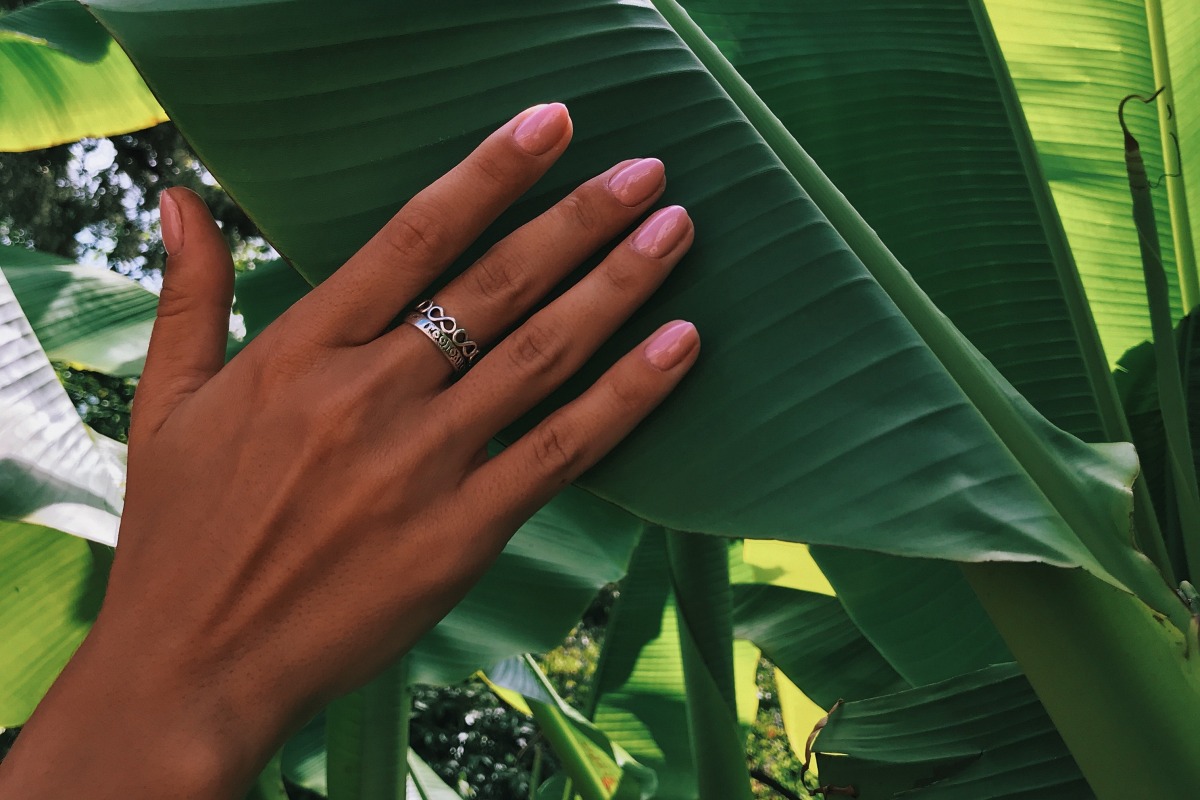
Short answer: The more toxic chemicals that are removed from nail polish certainly the better — if they are truly removed and another toxic chemical is not substituted in their place. However, even if certain chemicals are removed, there generally are so many that still remain, that it is a stretch to call most of the #-free formulations truly non-toxic. Thus, cautious consumers are advised to be wary of greenwashing and health-washing and to take a close look at the ingredients.
Long answer: Harvard School of Public Health’s investigation into the continual regrettable substitution of nail polish ingredients led to similar conclusions: although “safer” nail polish brands may have removed a few toxic chemicals, they still contain other concerning ingredients.
A number of emerging plasticizers, organophosphate esters, and UV stabilizers have rarely been reported in cosmetics or environmental samples but were found at very high levels in beauty products of last year’s study on the Chinese, Korean, French, and North American lipsticks and nail polishes (Tang, 2021). Raising concerns about the environmental release and human exposure risk of novel nail polish ingredients go hand in hand with no reliable sources on the evolving nail polish labels and their actual meaning. California’s Environmental Production Agency investigated seven 3-Free nail care products and discovered four of them still contained considerable amounts of toluene and one contained high DBP levels (Kwon, 2022). Recent analysis also found 5 of 29 products containing formaldehyde, 4 of which were advertised as formaldehyde-free (Voller et al., 2019), questioning the reliability of nail polish manufacturers that advertise themselves as “free” from specific toxicants. Still, Harvard’s Health Blog summarizes the #-free nail polishes as a possible and somewhat better alternative to conventional polish for those wishing to avoid particular chemicals, although the health benefits remain uncertain (Nassim & Liu, 2019).
Does Healthy Nail Polish Even Exist?
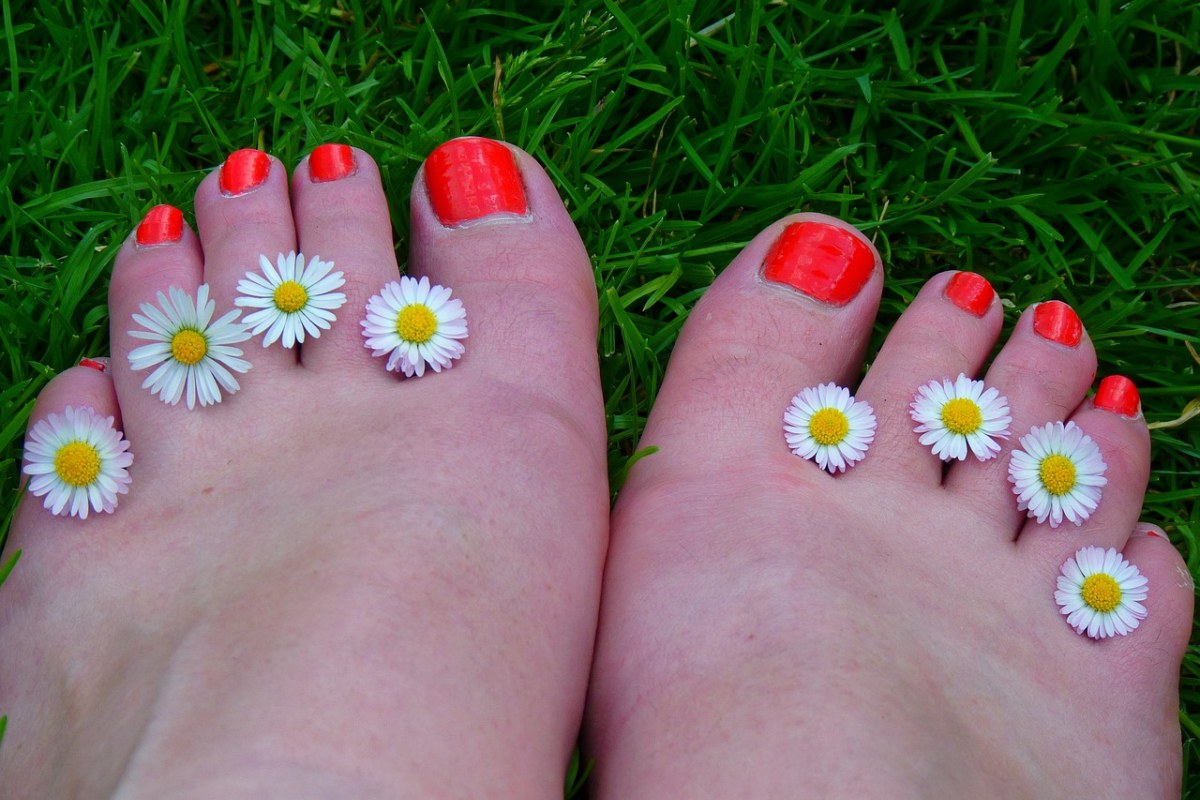
Short answer: Yes! Healthy nail polishes do exist! But… the most healthy and eco-friendly way to color your nails would require following the oldest recipes from ancient China using natural ingredients…
Long answer: Looking for the most sustainable nail polishes of all time, we need to again turn ourselves back to the dawn of cosmetics history. Although not as durable, the natural ingredients used back in the ancient days were first of all – less harmful (and even helpful!) both for the human body and the environment, and second of all – renewable. However, most of the recipes based on ancient practices prove to be disappointing in comparison with the result of modern-day lacquers. Early nail polish was definitely not a vegan mixture with its animal wax and protein dyed with orchids or roses, left on the nails for a number of hours to leave a stain. Mostly creating a colored tint, the nail paint lasted best with the use of stronger natural dyes, like plant-derived henna.
The oldest ways of nail painting were used not only for their beauty aspects but also for the health-promoting effects of many of the ingredients used to make nail coloring mixtures. Rose petals were proven to possess antioxidant and antimicrobial properties (Nowak et al., 2013). Egg white has been used by Egyptian, Roman, and Persian physicians to treat multiple disorders (Jalili-Firoozinezhad et al., 2020). Beeswax is commonly used in folk medicine due to its antioxidant and antimicrobial effects and cytokine increase in skin cells (Bayir et al., 2019). Gelatin has been long known for promoting skin and nail regeneration (Tyson, 1950), while a wide range of biological properties has been attributed to henna, including antimicrobial, anti-inflammatory, and anticancer effects, as well as hepatoprotective and antioxidant activities (Semwal et al., 2014).
For some of the more enterprising nail-painting aficionados out there, trying your hand at some of the old or new DIY nail polishes might prove an interesting opportunity to change your beauty routine for healthier nails.
Here is a recipe from Dr. Axe for a natural nail tint, and also a video about the ancient Chinese technique:
- Article: Natural DIY Nail Polish with Olive Oil & Vitamin E
- Video: Ancient Chinese nail polish technique still in use today
Understandably for most people, the concept of tinting the nails with flower petals wouldn’t win against the vibrant colors and long-lasting effects of modern nail polishes. Therefore, it is important to nurture in ourselves consumer behavior geared to benefit health and the environment, choosing, if not perfect options, at least the least harmful ones. Equipped with the knowledge of nail-polish marketing practices and the number of harsh chemicals in even the “least toxic” nail polishes, you can make more conscious choices to purchase safer options that will be healthier for you and the planet.
Some 9-Free through 21-Free Nail Polishes On the Market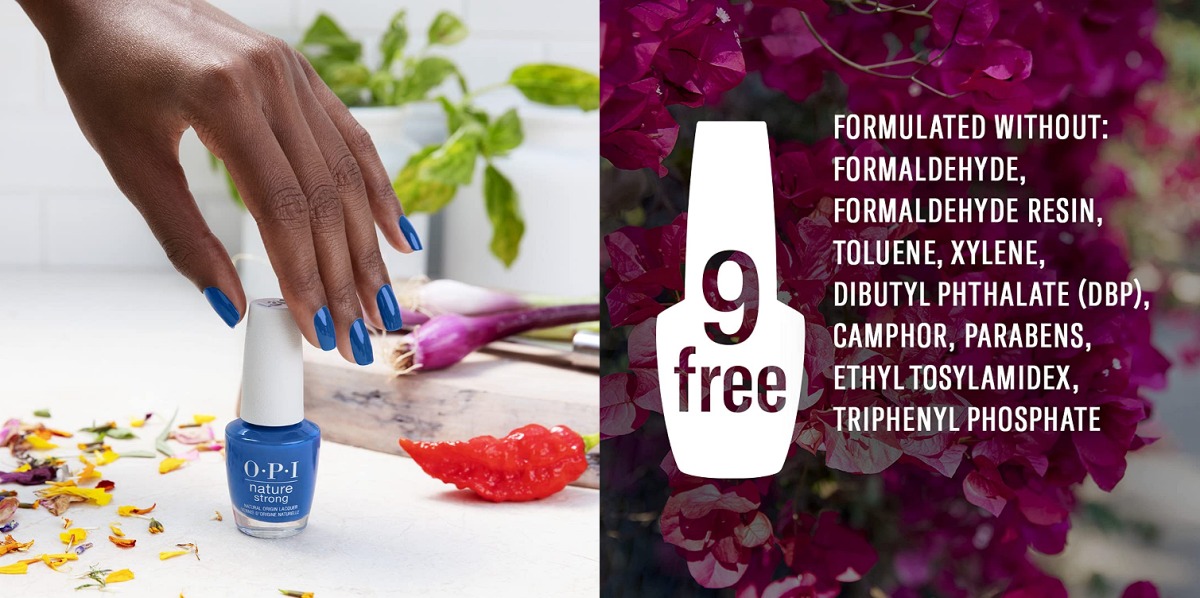
Still NEED your nail polish despite it not being 100% toxin-free? Fortunately, there are more and more #-FREE nail polishes available on the market to choose from. Decide what level of “free” you are comfortable with, and then try out some of the brands until you find your favorites.
Here are some representative brands and there are many more you can find on Amazon as well.
- 9-free: OPI Nature Strong Vegan Nail Polish, Natural Origin, Cruelty-Free – 9-free
- 16-free: Sally Hansen. Good. Kind. Pure. Vegan nail polish – 16-free
- 17-free: ella mila Professional Nail Polish – Love Collection – 17-free
- 21-free: 10 Free Chemistry Toxic Free Vegan Nail Polish by 10+ Free Life – 21-free
Note: Republic of Green researches and reviews eco-friendly products that we hope you will love! As an Amazon Associate, Republic of Green may earn a small commission on qualifying purchases if you click through to purchase something on Amazon. There is no additional cost to you and it helps us to keep bringing you good content. Thank you for supporting Republic of Green!
We hope this article has been eye-opening and has helped you to know what to look for when searching for the “least toxic” nail polish. If you try some out, please let us know your thoughts in the comments!
Republic of Green loves to introduce people to eco-friendly businesses that help us all to live a healthier, more sustainable lifestyle. Want more product reviews? Check out the Sustainable Fashion or Clean Beauty & Personal Care news articles. Or, browse Clean Beauty & Personal Care Brands in the Republic of Green Business Directory. Thank you for being green, even in small ways!
References:
Baran, R. (2002). Nail cosmetics. American Journal of Clinical Dermatology, 3(8), 547-555. 10.2165/00128071-200203080-00005
Bayir, Y., Un, H., Ugan, R. A., Akpinar, E., Cadirci, E., Calik, I., & Halici, Z. (2019). The effects of Beeswax, Olive oil, and Butter impregnated bandage on burn wound healing. Burns, 45(6), 1410-1417. 10.1016/j.burns.2018.03.004
Brunning, A. (2017). The Chemistry of Nail Polish – Polymers, Plasticisers, and Pigments. Compound Interest. https://www.compoundchem.com/
Chandra, S., & Das, A. (2019). The science of nail polish, nail polish remover, and nail moisturizers. In Nail Disorders (pp. 497-501). CRC Press. 10.1201/9781351139724-35
Forde, K. (2016). History of Nail art. fashion-history.lovetoknow.com
Jalili-Firoozinezhad, S., Filippi, M., Mohabatpour, F., Letourneur, D., & Scherberich, A. (2020). Chicken egg white: Hatching of a new old biomaterial. Materials Today, 40, 193-214. https://doi.org/10.1016/j.mattod.2020.05.022
Kim, S., Chen, J., Cheng, T., Gindulyte, A., He, J., He, S., Li, Q., Shoemaker, B. A., Thiessen, P. A., Yu, B., Zaslavsky, L., Zhang, J., & Bolton, E. E. (2019). PubChem in 2021: new data content and improved web interfaces. Nucleic Acids Res., 49(D1), D1388–D1395. https://pubchem.ncbi.nlm.nih.gov/
Kwon, Y. (2022). Assessing an Overall Toxicological Implication of Nail Care Product for Occupational and Consumer Health Improvement. Iranian Journal of Public Health, 51(5), 1185. 10.18502/ijph.v51i5.9436
Mendelsohn, E., Hagopian, A., Hoffman, K., Butt, C. M., Lorenzo, A., Congleton, J., … & Stapleton, H. M. (2016). Nail polish as a source of exposure to triphenyl phosphate. Environment International, 86, 45-51. 10.1016/j.envint.2015.10.005
Miller, C. (2020). 10.6 Nails. Human Biology. https://humanbiology.pressbooks.tru.ca
Mohiuddin, A. K. (2019). Cosmetics in use: a pharmacological review. J Dermat Cosmetol, 3(2), 50-67. https://medcraveonline.com/JDC/JDC-03-00115.pdf
Nassim, J., Liu, K. (2019). A look at the effects of nail polish on nail health and safety. Harvard Health Blog 11/21 2019. Harvard Health Publishing, Harvard Medical School. https://www.health.harvard.edu/blog
Nowak, R., Olech, M., Pecio, Ł., Oleszek, W., Los, R., Malm, A., & Rzymowska, J. (2014). Cytotoxic, antioxidant, antimicrobial properties and chemical composition of rose petals. Journal of the Science of Food and Agriculture, 94(3), 560-567. 10.1002/jsfa.6294
Semwal, R. B., Semwal, D. K., Combrinck, S., Cartwright-Jones, C., & Viljoen, A. (2014). Lawsonia inermis L. (henna): Ethnobotanical, phytochemical, and pharmacological aspects. Journal of Ethnopharmacology, 155(1), 80-103. 10.1016/j.jep.2014.05.042
Sherrow, V. (2001). For appearance’s sake: The historical encyclopedia of good looks, beauty, and grooming. Greenwood Publishing Group: 119. https://archive.org/details/forappearancesake
Tang, S., Chen, Y., Song, G., Liu, X., Shi, Y., Xie, Q., & Chen, D. (2021). A cocktail of industrial chemicals in lipstick and nail polish: profiles and health implications. Environmental Science & Technology Letters, 8(9), 760-765. https://doi.org/10.1021/acs.estlett.1c00512
Tyson, T. L. (1950). The effect of gelatin on fragile fingernails. Journal of Investigative Dermatology, 14(5), 323-325. https://doi.org/10.1038/jid.1950.41
Voller, L. M., Persson, L., Bruze, M., Ericson, M. E., & Hylwa, S. A. (2019). Formaldehyde in “Nontoxic” nail polish. Dermatitis, 30(4), 259-263. 10.1097/DER.0000000000000493
Walters, K. A., & Flynn, G. L. (1983). Permeability characteristics of the human nail plate. International journal of cosmetic science, 5(6), 231-246. 10.1111/j.1467-2494.1983.tb00348.x
Walters, K. A., Flynn, G. L., & Marvel, J. R. (1981). Physicochemical characterization of the human nail: I. Pressure-sealed apparatus for measuring nail plate permeabilities. Journal of Investigative Dermatology, 76(2), 76-79. 10.1111/j.2042-7158.1983.tb04258.x
Wang, Y., & Qian, H. (2021, May). Phthalates and their impacts on human health. In Healthcare (Vol. 9, No. 5, p. 603). MDPI. 10.3390/healthcare9050603
Young A. S. (2017) The Continual Regrettable Substitution of Nail Polish Ingredients. https://sites.sph.harvard.edu/hoffman-program/2017/02/22/
Young, A. S., Allen, J. G., Kim, U. J., Seller, S., Webster, T. F., Kannan, K., & Ceballos, D. M. (2018). Phthalate and organophosphate plasticizers in nail polish: evaluation of labels and ingredients. Environmental science & technology, 52(21), 12841-12850. 10.1021/acs.est.8b04495
and:
- https://health.clevelandclinic.org/why-you-should-give-your-toenails-a-break-from-polish/
- https://dictionary.cambridge.org/dictionary/english/nail-polish
- https://www.grandviewresearch.com/industry-analysis/nail-polish-market
- https://www.fda.gov/cosmetics/cosmetic-products/nail-care-products
- https://www.statista.com/statistics/286905/usage-nail-polish-nail-care-products-us-trend/

